As an illustration of His awesome glory and beauty, God infused His entire creation —including the biological portion of His creation—with extraordinary beauty. Because that beauty is bestowed upon a finite creation, the beauty of the creation is limited, but it is nonetheless breathtaking. There is not just a lot of beauty, the beauty itself has an appealing array of qualities. There is, if you will, a beauty to the creation’s beauty. What follows is an attempt to describe some of the amazing qualities of the beauty God placed in His biological creation.
The following article is a from Devotional Biology: Learning to Worship the Creator of Organisms, Chapter 3.2, pgs. 73-81. The views expressed in this article reflect those of the author, and not necessarily those of New Creation.
Deep Beauty
God created beauty at every scale of the universe—infusing it into the smallest unit, the largest structure, and every entity between—including organisms. In contrast, the beauty of things made by humans is shallow—typically beautiful at only one scale.1 An oil painting examined too closely amounts to unimpressive individual brush strokes; an oil painting far enough away is not seen as beautiful at all. A striking set of watch components examined too closely amounts to a set of ugly cogs. The most beautiful things made by humans lose their beauty when we get too close or back up too far.
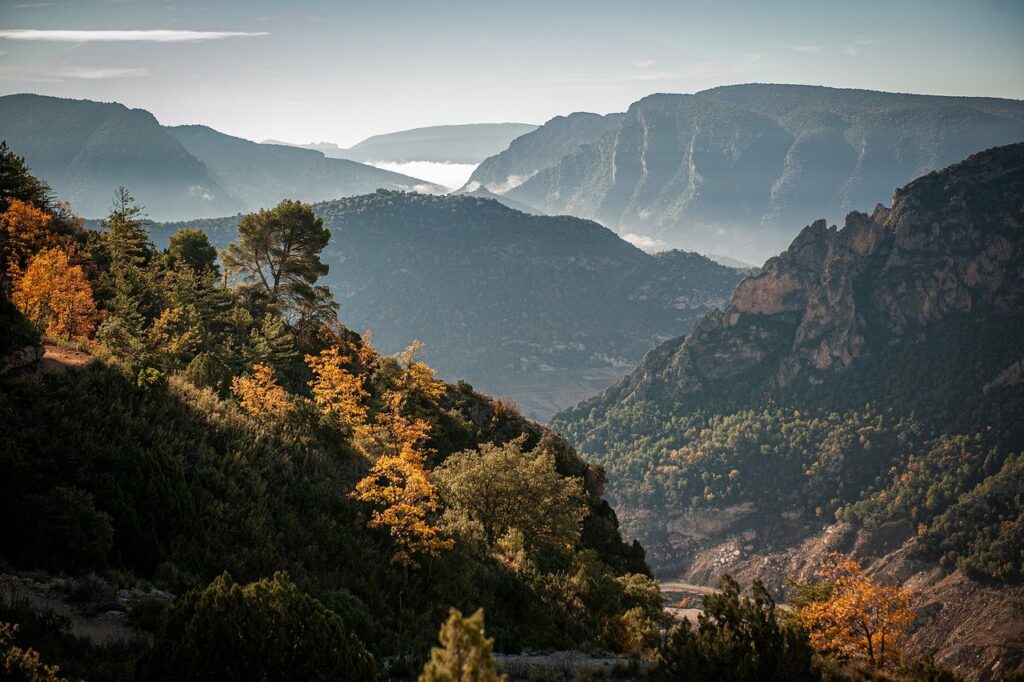
In contrast, the creation’s beauty is found at every scale. The beauty of a ‘purple mountain’ observed closer becomes a stunning mountain vista draped with a soft, green blanket. Closer yet it is a warm forest scene. Even closer, one can be struck by a bird’s colorful feathers. At a smaller scale is the iridescence of a single feather, and smaller still is the repeating symmetry of microscopic interlocking barbules. Even closer one finds the ordered arrangement of specially designed cells, and closer still are the intricate components of a single cell. The depth of the beauty is not even limited by the bounds of biology. Stunning arrangements of molecules and atoms and subatomic particles are found at scales many times smaller than the smallest organisms. At the opposite end of the size spectrum, when all of biology gets too small to see, there is still beauty in the awe-inspiring scenes from satellites and spacecraft, and even beyond to stars and galaxies.
The beauty of God’s creation is so much greater than the most beautiful things made by man in part because the beauty of God’s creation is scale independent. How very deep indeed is the beauty of God. One can imagine that every brushstroke of His original creation must have been spectacularly beautiful. Not a single one was out of place and not a single one was unessential for the beauty of the whole. Even now, with the creation fallen and marred, God is interested in bringing out more glory to Himself by increasing its beauty. He seeks to make all things beautiful in His time (Eccl. 3:11), so that everything glorifies God to its fullest potential. This includes every imperfection of our lives—from a small, seemingly insignificant scratch to the very largest, seemingly insurmountable ugliness. Each one of us is an essential component of the beauty and the tapestry of the creation of God.
Ubiquitous Beauty
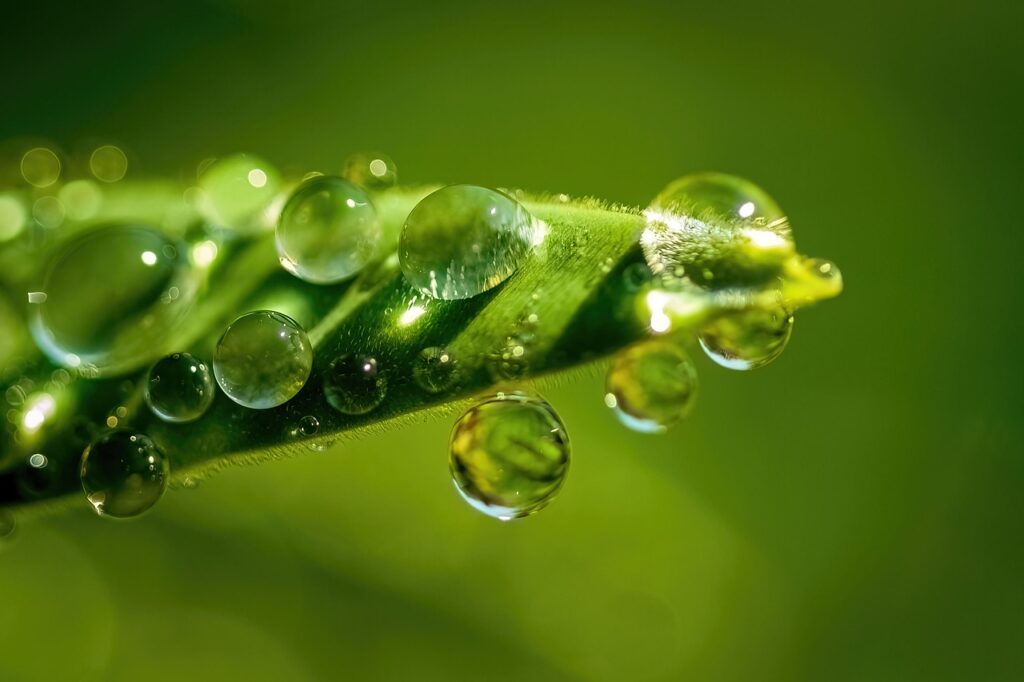
Beauty is found throughout His creation—not just at every scale, but in every location. This beauty is found in every corner of the universe. Even that portion of His beauty that He chooses to reveal through biology is found across the entirety of the earth. Organisms with beauty are found in the air, the land, and the seas.
Nearly every body of water and every landscape—no matter how harsh—is adorned
with organisms. From the tops of the highest mountains, to the ice on the coldest pole, to the baked surface of the driest desert, biological beauty is found across all the continents. Organisms thrive from boiling hot springs, to seething cauldrons of acid, to springs at the bottom of the deepest oceans, and even between grains of sand under crushing pressures miles beneath the earth’s surface. Biological beauty is ubiquitous across the planet.
Even when something makes His creation ugly, God begins a process that replaces
that ugliness with a new beauty. In the ‘natural’ course of events, healing comes to
landscapes devastated by pollution, war, or catastrophe. God built a remarkable facility into His creation that keeps its beauty in balance and restores beauty when beauty is lost, similar to how our bodies repair themselves after injury. Stinky, lifeless oozes become clear streams teaming with life. Stark landscapes dotted by fallen logs become vibrant forests. Drab underwater shipwrecks become colorful reefs. Land stripped of vegetation and deeply rutted with erosion becomes reclaimed again by rain forest. Sometimes it takes weeks or months and sometimes it takes centuries or millennia. Sometimes it even requires a replacement of what was there with something new.2 But, no matter how marred, God can make the fallen beautiful.
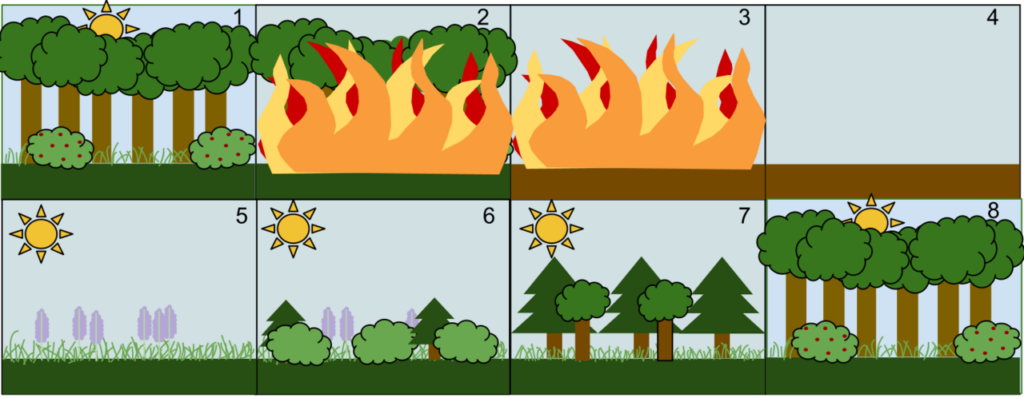
In the biological world this is accomplished in individual organisms by means of biological processes of repair and healing. On a larger scale, this is done in communities of many species of organisms by the process of community succession. In community succession, the species found in a particular area change over time as organisms at a given time prepare the area for another community of organisms to follow. Each such community alters the environment in such a way as to effectively phase itself out. Over the course of time, what results is a series of different communities, each replacing the previous one, finally resulting in a stable climax community that can persist more or less indefinitely at that location.
Community succession usually begins with the arrival of pioneer species. Pioneer
species are specially designed for these situations. Photosynthesizers, like cyanobacteria, lichens, and plants, will usually be the first to arrive on a barren landscape because they can harvest their energy from the sun. Animals will come in later. If the environment is dry and without soil, the lichens will be the first because they can get the water they need directly from the atmosphere, even in the driest of deserts. Lichens also erode rocks to produce soil for plants that follow after. The first plants that appear will usually be those that can fertilize the soil because they carry nitrogen-fixing bacteria.
Some plants are even designed to come in after a fire (e.g. lodgepole and Jack pine
cones that open after being heated up in a fire). An example of community succession would be the development of communities following the retreat of Alaskan glaciers. Pioneer species, such as lichens, mosses, and nitrogen-fixing annuals build up a fertile soil. Other plants germinate in that soil and eventually a community dominated by nitrogen-fixing alders and willows and cottonwoods takes over. This community is replaced by one dominated by western hemlock and spruce, and finally that community is replaced by the climax community dominated by Sitka spruce.
God restores such communities for His own glory, to make sure His own beauty is
always well pictured in the creation. If He is so interested in restoring the beauty of plants, animals, and the earth itself, how much more is He interested in restoring our own beauty and the beauty of our lives.
Profound Beauty
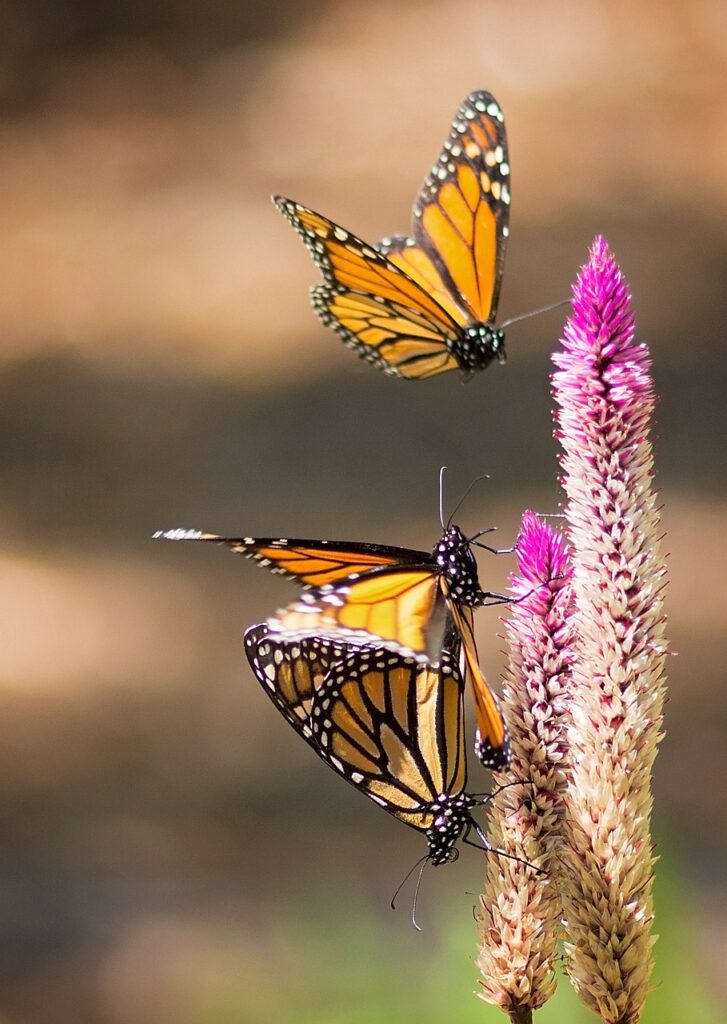
Beauty is not just everywhere at every scale, it is also intense. The beauty of the biological creation is awe-inspiring. Whether it is the bioluminescent sparkling of dinoflagellates on the waves of the ocean at night, or the flurry of a flock of migrating butterflies, or the fiery brilliance of a maple tree in the fall, or the vibrant color of prairie flowers, or any of millions of other scenes, biological beauty has the power to stop us in our tracks. It strikes us with awe and convinces us again and again of the beauty of the Creator.
Biological beauty has inspired poets, painters, sculptors, composers and artists of all types and in all cultures. No one has matched it or fully captured it, though many have tried. Countless lifetimes of talented artists have been committed to sharing that beauty with others. As awesome as the creation’s beauty is, how much greater is the beauty of the Creator.
Multifaceted Beauty
There are many different types of biological beauty in the world. Different sources of beauty can stimulate different senses. Our sense of touch reacts to a cool carpet of grass, a velvety cluster of mimosa leaves, the smooth scales of a boa, the sandpaper roughness of a shark, the soft fur of a chinchilla, and myriad of other textures. God has designed organisms to stimulate our senses of smell, taste, sound, and sight in thousands and tens of thousands of different ways.
The same biological scene can not only be perceived with different senses, but also
from different vantage points. We examine it from above and below, from the north and the south and the east and west. We can even examine it at different scales, with our own eyes and with aids from lenses and microscopes. And that same biology yields a distinct beauty in each case—from every perspective.
When God gifted humans to appreciate beauty, each person was graced with an
appreciation of a unique type of beauty—giving rise to the phrase ‘beauty is in the eye of the beholder’. Yet, God fashioned the biological creation in such a way as to stimulate each unique perspective. When a person shares the beauty he or she sees, others are given the privilege to appreciate a beauty they would otherwise have missed. When the perspectives of all people are combined biology is seen to be a magnificent tapestry of interwoven beauties. Like a well-cut diamond, the beauty of biology is multi-faceted. In a similar manner, God is uniquely beautiful in every situation and seeks to illustrate His beauty in all situations.
Sparkling Beauty
Finally, creation’s beauty is not boring. It is diverse and it is ever-changing. The same highway turnout never manifests the same vista, for biology is always changing. Every stunning view changes because different organisms are active at different times of the day and different seasons of the year. Organisms also change shape and size as they grow, change color and form with the seasons. And movement characterizes most organisms—sometimes the movement of the whole organism, but always the movement of its components.
Creation’s beauty is vibrant. It sparkles, if you wish, and that sparkle has its own
beauty. The beauty of the creation is always surprising and always refreshing. God is an unchanging God—in the sense that He will always have an unbounded quantity of each of His attributes. He will always have unbounded holiness, power, beauty, and so on. For example, He will always and forever have unbounded love toward us, but every moment of every day we realize the impact of that love in a new and fresh way. It is as if His love ‘sparkles’. Each of His attributes sparkles. God Himself—His nature and His beauty—is always surprising and always refreshing. God’s beauty sparkles, and that sparkle has its own beauty.
The Origin of Beauty
The ancient Greek philosophers were fascinated by beauty. They marveled at its
splendor, speculated on its true nature, extrapolated to its perfection, and wondered about its origin. Millennia later, the origin of beauty is a puzzle to modern evolutionists because natural selection (thought to be the primary mechanism of change in naturalistic evolution) should select survival or efficiency over beauty. If organisms refocused the energy they currently use to ‘be beautiful’ in order to outcompete the organisms around them, they would be better survivors. They would be better players in the struggle for the survival game known as evolution.
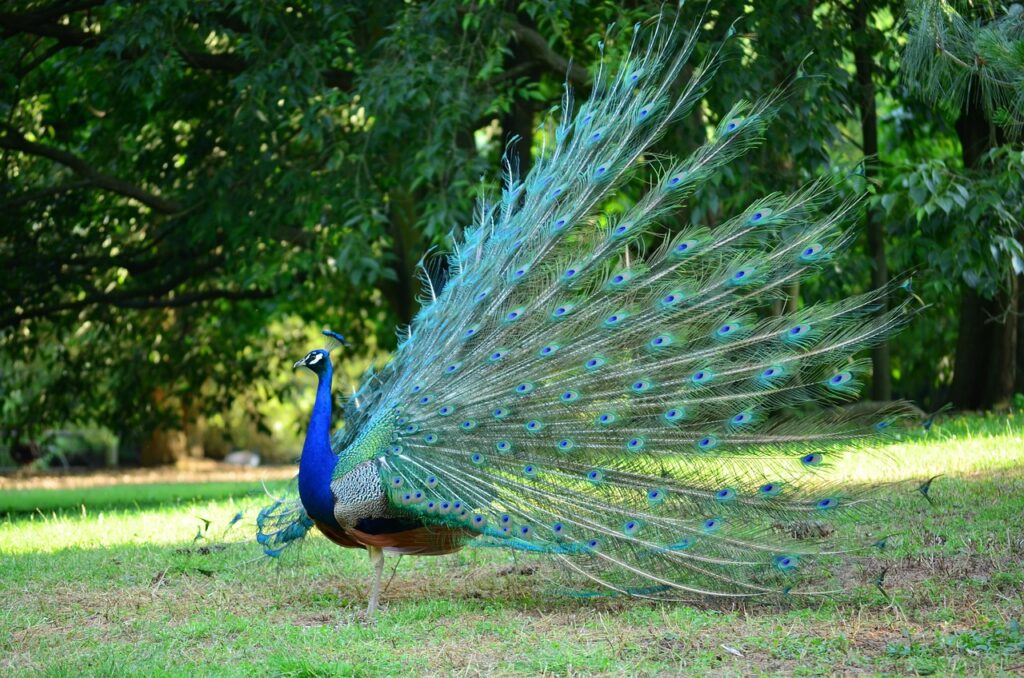
If peacocks had shorter tail feathers they could fly better and more readily escape from predators. Charles Darwin (1809-1882) suggested that peacocks have beautiful tail feathers because peahens mated only with beautiful peacocks. But then, why did peahens do that? Their young would have survived better if they had chosen peacocks that could fly better.3 In like manner, if butterflies did not stand out so well, fewer of them would be eaten by birds.
If natural selection was truly the source of biological variety, then we would expect there would be little to no beauty in the world. And, as long as natural selection has operated in the world (since the Fall of man), it has systematically taken beauty out of the world. Yet, there is still a profound amount of beauty in the world. Imagine how much beauty there must have been in the beginning! A God of beauty infusing the creation with beauty is the only reasonable explanation for the deep, profound, ubiquitous, multi-faceted, sparkling beauty we see in this world. Creation’s beauty testifies of the Creator and stands as a substantial argument against naturalism and evolution.
Human Appreciation of Beauty

Humans appreciate beauty. Even though different humans appreciate different types of beauty, every human appreciates some sort of beauty, and that beauty is found in God’s creation. Every human being is awed by biological beauty. The ability to appreciate beauty, and to be awed by it, are as God-given as beauty is itself. Freezing in awe at the beauty of His creation is not the best survival tactic in a savage world. Natural selection would tend to take out the appreciation of beauty. It would especially rid the world of the tendency to be awed by beauty. Consequently, the ubiquitous appreciation of beauty in humans and the tendency to be awed by beauty also testify of God’s creation.
Consider, for example, how sensitive we are to beauty. If survival was our only reason for existence (which is more or less what is true in naturalistic evolution), we would not need our senses to be as sensitive as they are. Humans, for example, could get along quite well without seeing color. We could also get along with recognizing fewer tastes and smells. But God gave us these extreme sensitivities so that we could recognize beauty in biology. He desires for us to recognize biological beauty so that we can better understand the beauty of the unseen God. God has given us the capacity to see color—and to hear and taste and feel and smell to the extent that we can—as a blessing. They are a gift from the God Who desires us to perceive God’s invisible nature from those things that were made.
Beauty: Our Responsibility
Our Responsibility to God
As priests of the creation (see Chapter 1) we have a responsibility to know God,
worship God, make the creation a house of worship, and bring the creation into the worship of God. What we learn about biological life can help us do that. A study of biological beauty gives us insight into God’s very nature. Even a casual acquaintance with the awe-inspiring beauty of the biological world ought to remind us—at the very least—that our God is a God of awesome beauty.
A closer look at biological beauty gives us even further insight. For example, God
created a spectrum of perfection of beauty. God created some things that appear to lack beauty altogether. He garnished other things with stunning beauty, and still others with various levels of beauty between these extremes. There is, in fact, a complete spectrum of things from the non-beautiful to the strikingly beautiful. In the sky, for example, such a spectrum exists: “one glory of the sun, and another glory of the moon, and another glory of the stars, for one star differs from another star in glory” (I Cor. 15:40-41).
Even among humans there is a spectrum of perfection of beauty. Some of us are not so attractive—in fact, some of us might be just downright ugly! Others are stunningly beautiful. Most humans, of course, find themselves somewhere on that spectrum between these two extremes. Beyond humans, as Christ indicated (Mat. 6:29), even a simple plant (such as a single lily) has been graced with more beauty than is found even among the most beautiful of humans and the most beautiful of human creations. Organisms, then, create another spectrum of perfection of beauty. There are organisms that appear quite ugly to us, and others that are ugly (or is it cute?) in a homely sort of way. Other organisms are tolerably pleasant to perceive and still other organisms are truly gorgeous. The millions—in fact, millions of millions—of organisms make up quite an impressive spectrum of perfection of beauty.
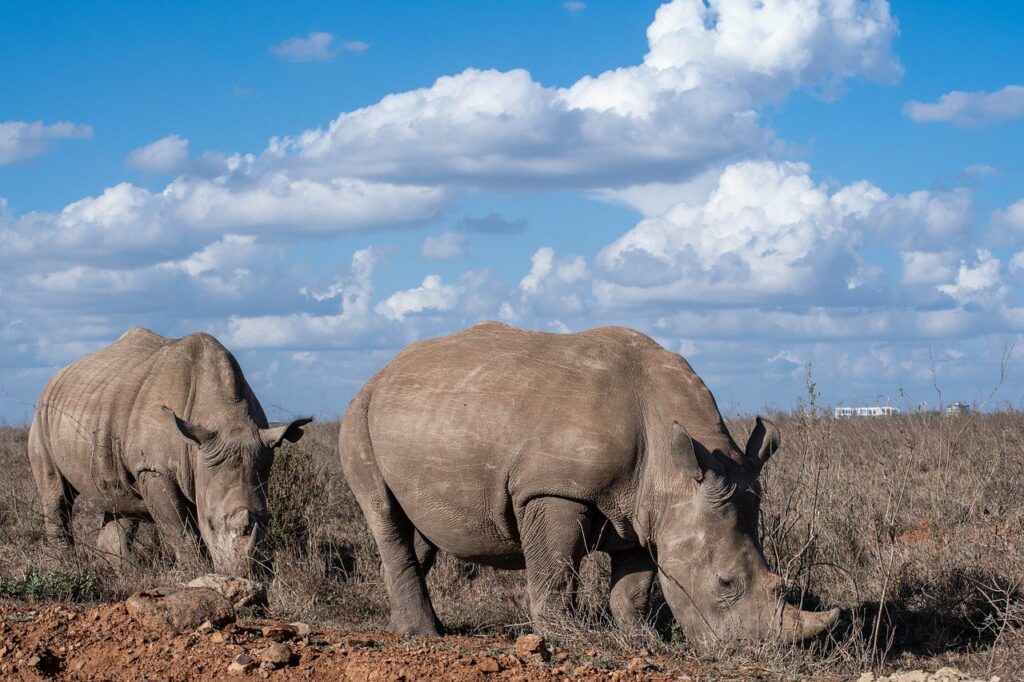
In our minds eye, we can follow that spectrum from the most unattractive to the most beautiful, and project beyond, imagining even greater beauty than we observe in all the creation. We can extrapolate towards the existence of infinite beauty—God Himself. Even though our brains cannot fully grasp it, through this process we can get a bit of a glimpse of the boundless beauty of God. He is the source of all beauty, the sustainer of all beauty, and He Who makes all things beautiful in His time. His beauty is without bounds, infinitely greater than all the beauty we see about us. The awesome spectrum of perfection of biological beauty—whether found in landscapes, or butterflies, or birds, or flowers—ought to aid us in understanding a bit of His beauty and ought to cause our hearts to lift up in worship towards the Source of all beauty.
Scripture indicates that God is active, everywhere present, creative, and desirous of relationship with us. Biological beauty reinforces these claims and gives further insight into their meaning. The sparkling nature of biological beauty, for example, is consistent with God being an active, dynamic, living God, and provides insight into what it means for God to be a living God. The ubiquity of that sparkle suggests that God is active over us, among us, and within us—even in those things we sometimes consider too mundane or lowly to concern the great God.
Beauty informs our understanding of the ever-present, on-going care by God of every aspect of our lives. The deep and ubiquitous nature of beauty is consistent with His omnipresence. God’s presence at all places and all times is suggested by the beauty we see everywhere, at all times, at all scales—even when we are otherwise unaware of His presence. The multi-faceted nature of beauty impresses upon us the creativity of God.
Providing each of us a beauty fitting our individual appreciation of beauty, reinforces the sense in which He interacts with us as individuals and cares about our individual needs. The fact that we have been given the tools to appreciate the beauty of the creation when those are not ‘necessary’ for our survival is consistent with God desiring relationship with us. This reminds us of how He loves us so much that He steps down from His worthy greatness so that we can understand and know Him. Finally, the mechanisms He has put in place to make sure that biological beauty is restored when it is marred, reminds us of how He is able, willing, and even desirous of restoring the ugliness of our lives and ‘make all things beautiful in His time’.
When we allow the Holy Spirit to reveal these aspects of God to us through the beauty of His creation, how can we not explode in worship? As you then acknowledge the origin of that beauty—in the person of God—you glorify God. As you continue your study of the beauty of organisms and the greater beauty of His being, your worship increases, you then fill the creation with His worship. You cannot then help but share that wonder with others and bring them into His worship with you. In this way you fulfill your role as priests of the creation.
Our Responsibility to the Creation
Preserving Beauty
In our responsibility as kings over the creation (see Chapter 1), we should serve God, and serve and protect the creation. After God infused beauty into His vast creation, he handed it over to us to ‘guard and keep it’. We have a responsibility to
preserve the beauty of creation and pass that beauty on to the next generation. Some activities mar the beauty of the creation in an obvious and direct sense (e.g. clear cutting, strip mining, burying trash in landfills, polluting).
More generally, though, human development (such as the construction of new homes, highways, factories, office buildings, schools) often replaces the natural beauty of creation with something substantially less beautiful. It should be noted that many of these changes are necessary, because being in the image of God, the needs of humans have a higher priority than even preserving the beauty of the creation. We often must reduce the beauty of His creation so as to meet the needs of others.
However, it is often possible to replace the beauty that was there with another beauty that is at least as honoring to the God Who created it. In those locations where beauty has already been reduced, we should strive to re-infuse beauty so as to restore the glory that God receives for it. In those cases where we are planning to develop an area, we should include designs that generate at least as much beauty as we will have to destroy in the process of construction.
Enhancing Beauty

Although God created an enormous amount of beauty in the creation He created the potential for even more beauty. He also gave humans the ability to reveal that beauty—to ‘create’ beauty. He gave us the opportunity to bring God even more glory by bringing out more of the beauty than was evident in God’s original creation.
One of the simplest ways to enhance creation’s beauty is by rearranging the organisms of God’s creation, thus creating more beautiful combinations of organisms. The ‘Garden of Eden’ was created by God (Gen. 2:8). God apparently selected a number of organisms, arranged them in a beautiful pattern, and placed them in the area He had set aside to be the ‘Garden of Eden’. God then placed man into the Garden ‘to dress and keep it’ (Gen. 2:15).
It is likely that from that moment on throughout human history, in the pattern established by their Creator, humans have been active in what is sometimes called
‘artificial selection’4—selecting organisms and arranging them in beautiful patterns.
Given that the organisms themselves were created by God, the beauty of such
rearrangements is appropriately ascribed to God. Consequently, through gardening and landscaping we can glorify God by creating beautiful arrangements of organisms.
A second method of enhancing the beauty of God’s creation is by breeding—where
humans select what organisms are to be bred (mated or crossed) with what other
organisms. Breeding can be used to make a desired characteristic more common or it can be used to combine characteristics of two organisms in a unique fashion. Changing the frequency of characteristics and creating new combinations of characteristics can produce beauty that was not recognized before.
Breeding can also reveal characteristics not seen in either parent, thus displaying
beauty hidden in the organisms (‘gifts of glory’ placed there by God). Breeding is an
ancient practice which may date back as far as the Garden of Eden. It is certain that it goes back at least to the time of Jacob, for God blessed Jacob by breeding livestock for him—and revealing to Jacob how He did it (Gen. 31:8-10). Breeding has produced hundreds of thousands of varieties, breeds, and cultivars of organisms, including hundreds of varieties of dogs, scores of varieties of pheasants, horses and cattle, roses, apples and peaches, and tens of thousands of varieties of orchids. Breeding new varieties of plants or animals that are cheaper to raise, or easier to keep healthy, or easier to get to market, or better-tasting or more attractive, etc., is an enormous industry in our modern world.
Yet it is also clear that breeders are merely revealing designs that were already present in the parent organisms, something God probably placed within those organisms at their creation. Such breeding has increased the beauty that is actually manifested in the creation, thus directly bringing more glory to God. To whatever extent it is then acknowledged that the new breeds were not actually created by humans, but put there by God, God receives even more glory.

Finally, beauty can also be enhanced by creating more fundamental rearrangements of God’s creation. Entire human professions have been created to enhance the beauty in God’s creation in this very manner. Interior decorating, cosmetology, the culinary arts, the fine arts—these are all examples of entire disciplines devoted to increasing the beauty in the world. Properly executed, practitioners of these activities can glorify God in profound ways.
Footnotes
- The observation of the scale-independent beauty of God’s creation in contrast to the single-scale beauty of human creations was first pointed out to me about 1990 by Dr. David Mention. ↩︎
- Such as He does when He creates in believers a new spirit (e.g. Eze. 11:19; 36:26), and as He will in the future when He creates a new heaven and a new earth (Isa. 65:17; Rev. 21:1). ↩︎
- Evolutionists have devised explanations (the most common of which is that beauty is an indication of health, so when peahens choose beauty they are implicitly choosing the desirable quality of health). Although many of these theories seem reasonable, none of them work well upon testing (e.g. there is little relationship between the ‘beauty’ of peacock feathers and the health of the peacock; peahens do not consistently choose either the most beautiful peacocks or the healthiest). Evolutionary theory continues to struggle to explain the origin and maintenance of biological beauty. ↩︎
- It is termed ‘artificial’ because it is done by humans and not by the ‘natural’ world. ↩︎

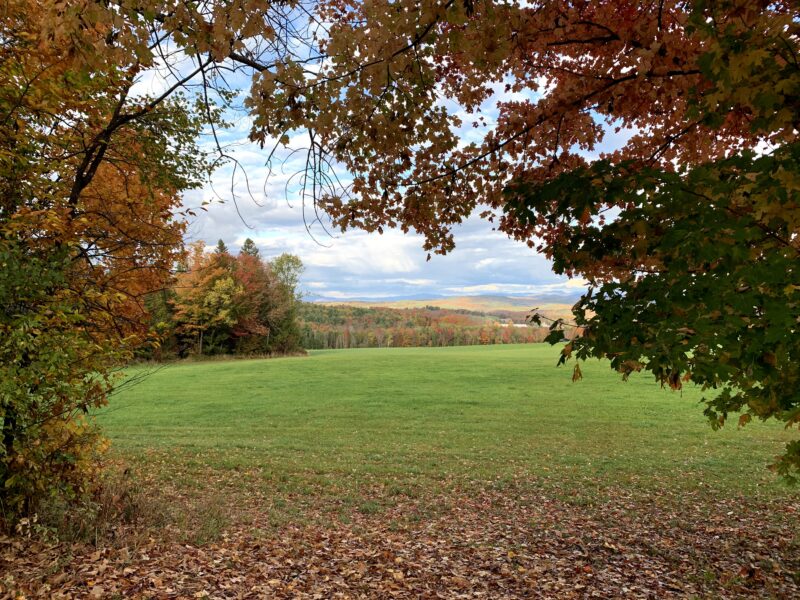
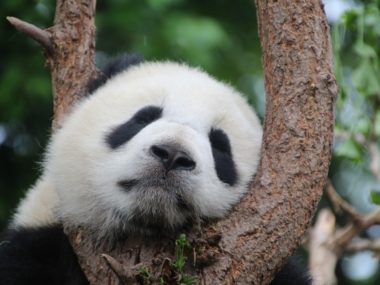

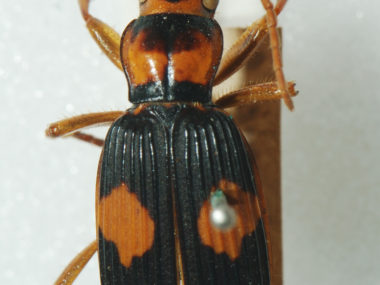
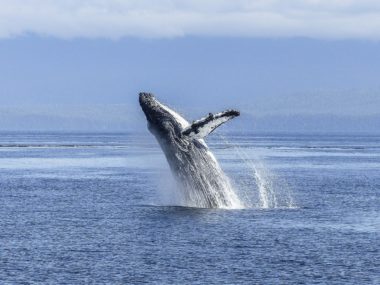
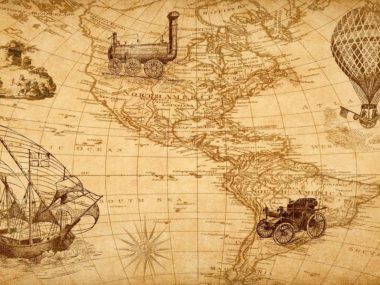
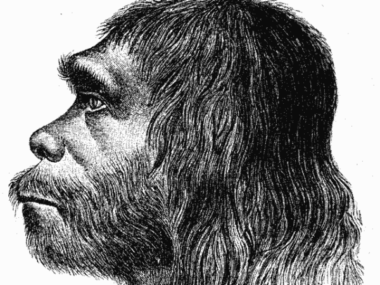




God created nature on creation week. since then its lost most of its beauty Ithink. Beauty is greatly a issue of symmetry. So really the universe and earth and nature on creation week was just accurate or truthful. Not beautiful really.since then mankind creates the concept of beauty because mostly everyuthing is now inaccurate. the more accurate sticks out creating a illusion or error we call beauty.There is no beauty but instead Gods accuracy which is just glorious or beautiful.